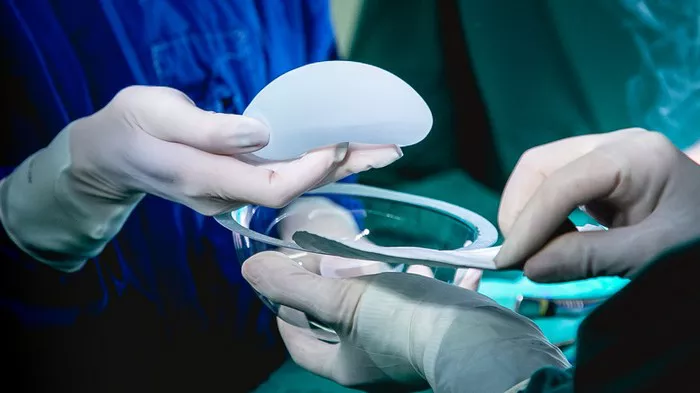Breast reconstruction surgery is a significant step for many women following mastectomy due to breast cancer. While the procedure can restore the appearance of the breast and improve emotional well-being, it is not without risks. Complications can arise, affecting the overall outcome and patient satisfaction. This article will delve into 5 common complications after breast reconstruction surgery, providing insights into their causes, symptoms, and management.
1. Infection
Causes and Risk Factors
Infection is a potential complication following any surgical procedure, including breast reconstruction. The risk of infection can be heightened by factors such as:
Poor wound care
Compromised immune system
Pre-existing medical conditions like diabetes
Use of tissue expanders and implants
Symptoms
Signs of infection include:
Redness and warmth around the surgical site
Swelling
Pain that worsens over time
Fever
Discharge of pus from the incision
Management and Prevention
Infections are typically managed with antibiotics. In severe cases, surgical intervention may be necessary to remove infected tissue or implants. Preventive measures include:
Proper wound care
Maintaining a sterile surgical environment
Close monitoring during the recovery period
2. Capsular Contracture
Understanding Capsular Contracture
Capsular contracture occurs when the scar tissue (capsule) that naturally forms around a breast implant tightens and squeezes the implant. This can lead to changes in the appearance and feel of the breast.
Causes
The exact cause of capsular contracture is not fully understood, but contributing factors may include:
Bacterial contamination during surgery
Hematoma (collection of blood) around the implant
Immune response to the implant
Symptoms
Symptoms of capsular contracture include:
Firmness of the breast
Distortion in the shape of the breast
Pain or discomfort, particularly in advanced stages
Management and Treatment
Treatment options vary based on the severity of the contracture:
Medications such as leukotriene inhibitors
Massage techniques
Surgical intervention to remove or release the scar tissue
Preventive measures include meticulous surgical techniques and possibly the use of textured implants, which are thought to reduce the risk of contracture.
See Also: 6 Types of Teardrop Breast Implants
3. Implant Rupture and Deflation
Types of Implants and Risk Factors
Breast implants can be filled with saline or silicone gel, and each type has its own risk of rupture. Factors that can contribute to implant rupture include:
Aging of the implant
Trauma to the chest
Manufacturing defects
Surgical error
Symptoms
The symptoms of implant rupture depend on the type of implant:
Saline implants: Noticeable deflation as the saline is absorbed by the body, leading to a sudden change in breast size and shape.
Silicone implants: Often less noticeable as the silicone gel may remain within the scar tissue capsule, known as a silent rupture. Symptoms can include changes in breast shape, lumps, or tenderness.
Management
If an implant rupture is suspected, imaging tests such as MRI or ultrasound are used to confirm the diagnosis. Treatment typically involves surgical removal and replacement of the implant.
4. Flap Necrosis
Understanding Flap Necrosis
Flap necrosis refers to the death of tissue used in autologous breast reconstruction (reconstruction using the patient’s own tissue). This can occur when the blood supply to the flap is insufficient.
Causes and Risk Factors
Risk factors for flap necrosis include:
Smoking
Obesity
Previous radiation therapy
Compromised blood flow during the surgical procedure
Symptoms
Symptoms of flap necrosis include:
Blackened or darkened tissue
Increased pain at the site
Foul-smelling discharge
Swelling and redness
Management
Early identification and intervention are crucial. Treatments may include:
Debridement (removal of dead tissue)
Hyperbaric oxygen therapy
In severe cases, additional surgery to repair or replace the affected tissue
Preventive measures involve optimizing the patient’s health preoperatively, careful surgical planning, and meticulous technique to ensure adequate blood supply.
5. Asymmetry and Aesthetic Concerns
Understanding Asymmetry
Achieving perfect symmetry in breast reconstruction can be challenging. Factors that contribute to asymmetry and other aesthetic concerns include:
Differences in natural breast size and shape
Changes in weight post-surgery
Healing and scar tissue formation
Symptoms
Aesthetic complications can manifest as:
Noticeable differences in breast size, shape, or position
Irregularities in skin texture or color
Visible scars
Management and Solutions
Addressing asymmetry and aesthetic concerns may involve:
Revision surgery to adjust the size, shape, or position of the implants or flaps
Fat grafting to smooth out irregularities
Scar revision procedures
Close collaboration between the patient and surgeon is essential to set realistic expectations and achieve satisfactory results.
Conclusion
Breast reconstruction surgery can greatly enhance the quality of life for women who have undergone mastectomy. However, it is crucial to be aware of the potential complications that can arise. Understanding the causes, symptoms, and management of these complications can help patients make informed decisions and seek timely intervention when necessary. With careful planning and proper care, many of these risks can be minimized, leading to successful and satisfying outcomes in breast reconstruction.
Related topics:

